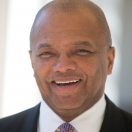
In the spring of 2015, the White House established a special Taskforce for Baltimore City. The Taskforce was charged with marshalling Federal funds, programs, and expertise to address some of the city’s social and economic challenges, like violent crime, high levels of unemployment and limited economic opportunity in low-income neighborhoods.
Baltimore is home to dedicated and creative public servants inside and out of government, many of whom are national leaders and experts in their field. Working with these leaders and with Maryland’s Congressional Delegation, the Taskforce focused on jobs, public health and safety. The Taskforce also prioritized investing in the long-term prosperity of the city through transportation, infrastructure, and the environment.
Today, the White House is releasing a new report that highlights the progress of the Taskforce and its accomplishments over the past eighteen months.
For example, to help address Baltimore’s unemployment rate, the Taskforce focused on creating new workforce programs, providing new opportunities for young people, and supporting small businesses. The Department of Labor funded One Baltimore for Jobs, a new initiative out of the Mayor’s Office that has helped hundreds of Baltimoreans land new jobs. In collaboration with the Taskforce and many public and private sector partners, Baltimore City also successfully grew the city’s youth summer jobs program by 60%, creating new professional opportunities for 6,000 young people over the course of two summers.
To address public safety and public health, the Taskforce focused on protecting young people in and out of school, funding programs to make streets and neighborhoods safer, and reforming the Baltimore Police Department. For example, the U.S. Department of Justice and the U.S. Department of Health and Human Services identified $1 million in funding over two years to keep Baltimore City Health Department’s Safe Streets program alive. With this funding, the Baltimore City Health Department was able to sustain and expand current violence prevention efforts in Park Heights, Sandtown Winchester, Cherry Hill and East Baltimore, and significantly reduce gun violence among youth ages 14 to 24.
To lay the foundations for future prosperity, the Taskforce focused on investing in transportation, establishing new anchor institutions and commercial hubs, improving Baltimore’s parks and green spaces, increasing food access, and building civic capacity. For example, the Department of Transportation supported Baltimore City and the State of Maryland with two $10 million TIGER transportation grants for the Port of Baltimore and for improvements to North Avenue, respectively.
In many cases, from public health to workforce programs, the initiatives up and running in Baltimore are becoming national models, reflecting the commitment and caliber of the city’s citizens and leaders.
The Administration’s work in Baltimore reflects a broader push by President Obama to change how the Federal government works with cities, towns, and other communities. The President’s “community solutions” approach emphasizes closer coordination, data-based decision-making, and rigorous evaluation.
Citizens and local leaders in communities like Baltimore need a Federal Government that is more effective, responsive, and collaborative in addressing their needs and challenges. Far too often, the Federal Government has taken a “one-size-fits-all” approach to working with communities and left local leaders on their own to navigate Federal resources and programs.
Responding to the call for change from local officials and leaders nationwide, and grounded in the belief that the best solutions come from the bottom up, not from the top down, under the Obama Administration, Federal agencies have increasingly taken on a different approach to working with communities to deliver better outcomes in more than 1,800 cities, towns, regions, and tribal communities nationwide. The Federal-local partnership in the City of Baltimore exemplifies the Administration’s “Community Solutions” approach, which calls for an integrated Federal government to align resources and cultivate working relationships with local stakeholders to respond to the needs of the community.
Because of the groundwork that the Obama Administration has laid, the Federal government will continue to take a “community solutions” approach in its work in Baltimore and other cities, ensuring that the progress that the Taskforce has made in Baltimore is only the foundation for future Federal investments and partnerships.
Nate Loewentheil, Special Assistant to President for Economic Policy


